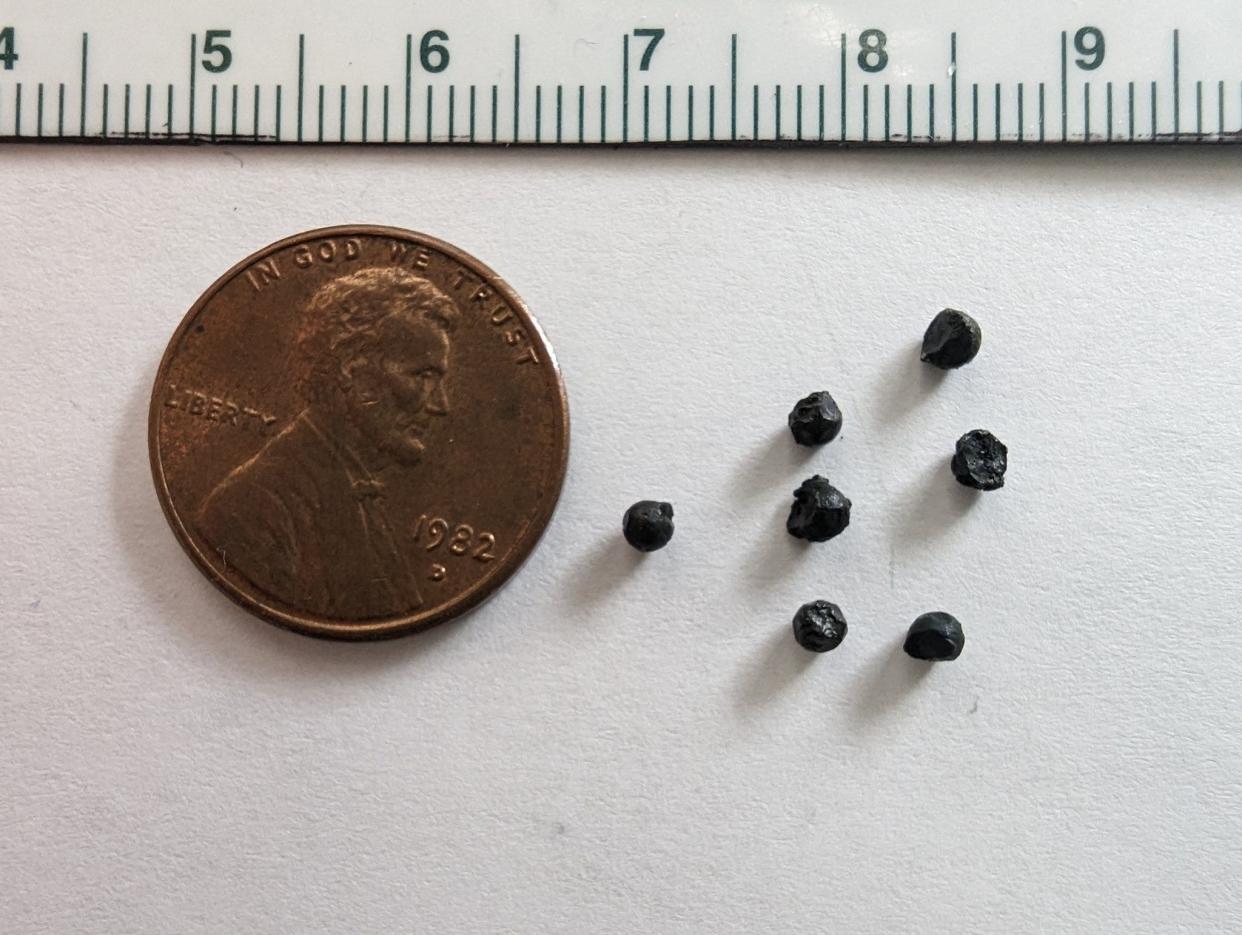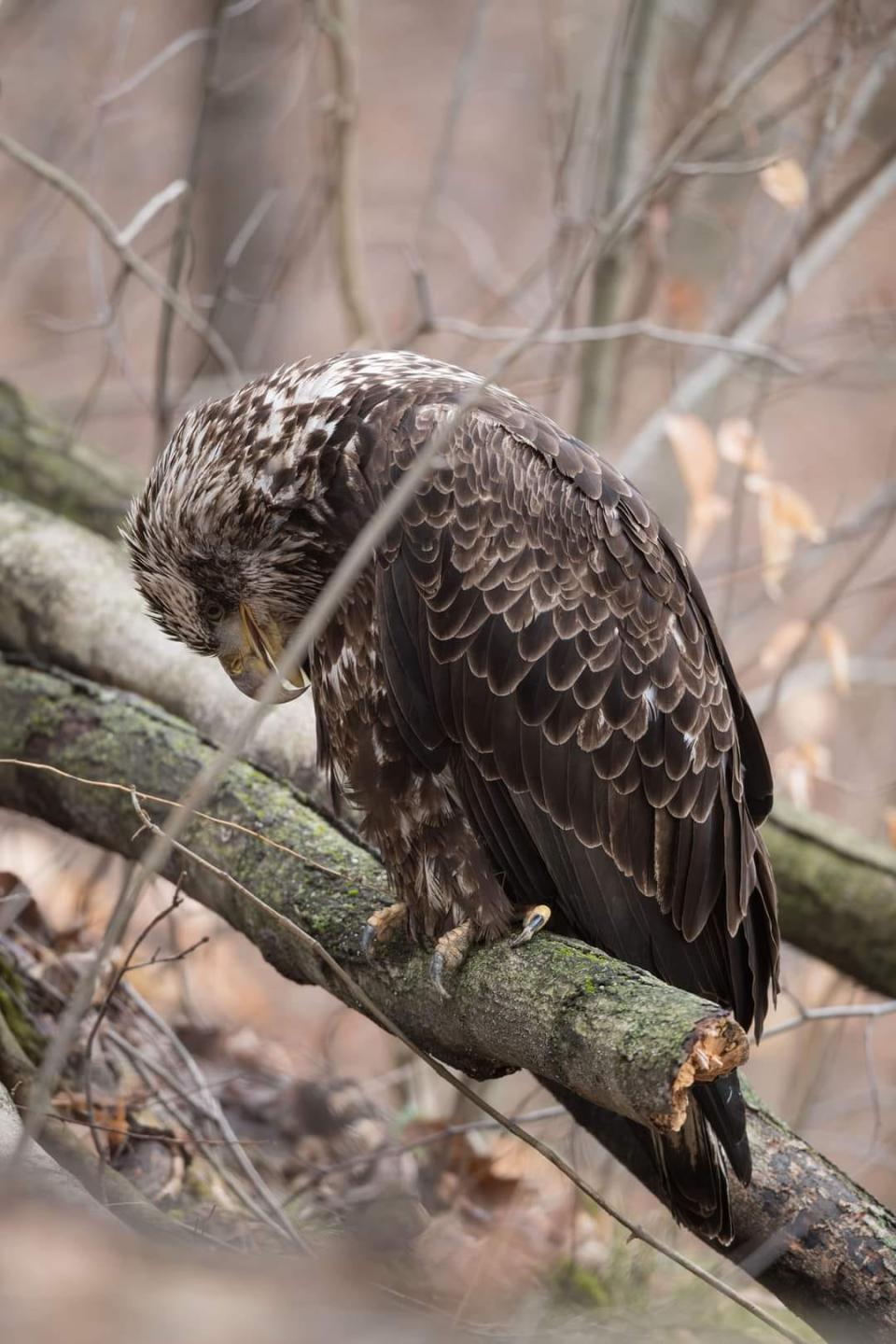Lead shot confirmed in gut of poisoned eagle from Potato Creek that died

Seven small lead shots were extracted Wednesday from the ailing, lead-poisoned bald eagle that was found last week at Potato Creek State Park in North Liberty and that died as wildlife rehabbers tried to save the bird.
The Tribune’s Outdoor Adventures column had reported that an X-ray had discovered seven circular pieces of lead in the sub-adult eagle’s digestive tract. Nicole Harmon, director of Humane Indiana Wildlife in Valparaiso, said she had the X-ray done at a nearby animal hospital because, by law, she isn’t able to open eagle carcasses without federal permission.
Outdoor Adventures: Here's insight on lead-free hunting, fishing gear to prevent poisoning wildlife
But — with stories in almost all of the local news media — questions from the staff and the public persisted over how the bird was actually poisoned with lead, Harmon wrote in a post on Humane Indiana’s Facebook page. Was it from fishing tackle or hunting ammunition? If so, where and how did it ingest the lead, whether it was from a fish or animal that it ate or a gut pile left over from hunting?
Lead poisoning can come from other sources, too, such as the soil and water and old, flaking paint on a house.
So, she wrote, Humane Indiana asked the U.S. Fish & Wildlife Service to extract the seven circular pieces of metal that the X-ray had shown. They are tiny and black, and each of them has chunks eroded from the sides — likely from being shot out of a gun. To be sure that they weren’t steel shot, which looks similar, Harmon said, staff were able to test with a magnet. Magnets attract steel but not lead.

The Facebook post states that the center didn’t take these steps to “place blame” or “point fingers.”
“It is simply to raise awareness of what CAN and DOES happen to our wildlife,” it states. “Discarded lead fragments, both from fishing tackle and lead shot can and sometimes will be consumed by wildlife, making them sick and potentially leading to serious injury or death.”
Eagles are prone to poisoning, partly because they are scavengers that will eat carcasses.
There are several non-lead alternatives in hunting ammunition and fishing tackle. This week’s Outdoor Adventures column gives a basic primer on what they are and how they differ from lead in cost and performance.
Find Outdoor Adventures columnist Joseph Dits on Facebook at SBTOutdoorAdventures or 574-235-6158 or jdits@sbtinfo.com.
This article originally appeared on South Bend Tribune: Lead shot found in Potato Creek State Park eagle that died poisoning

